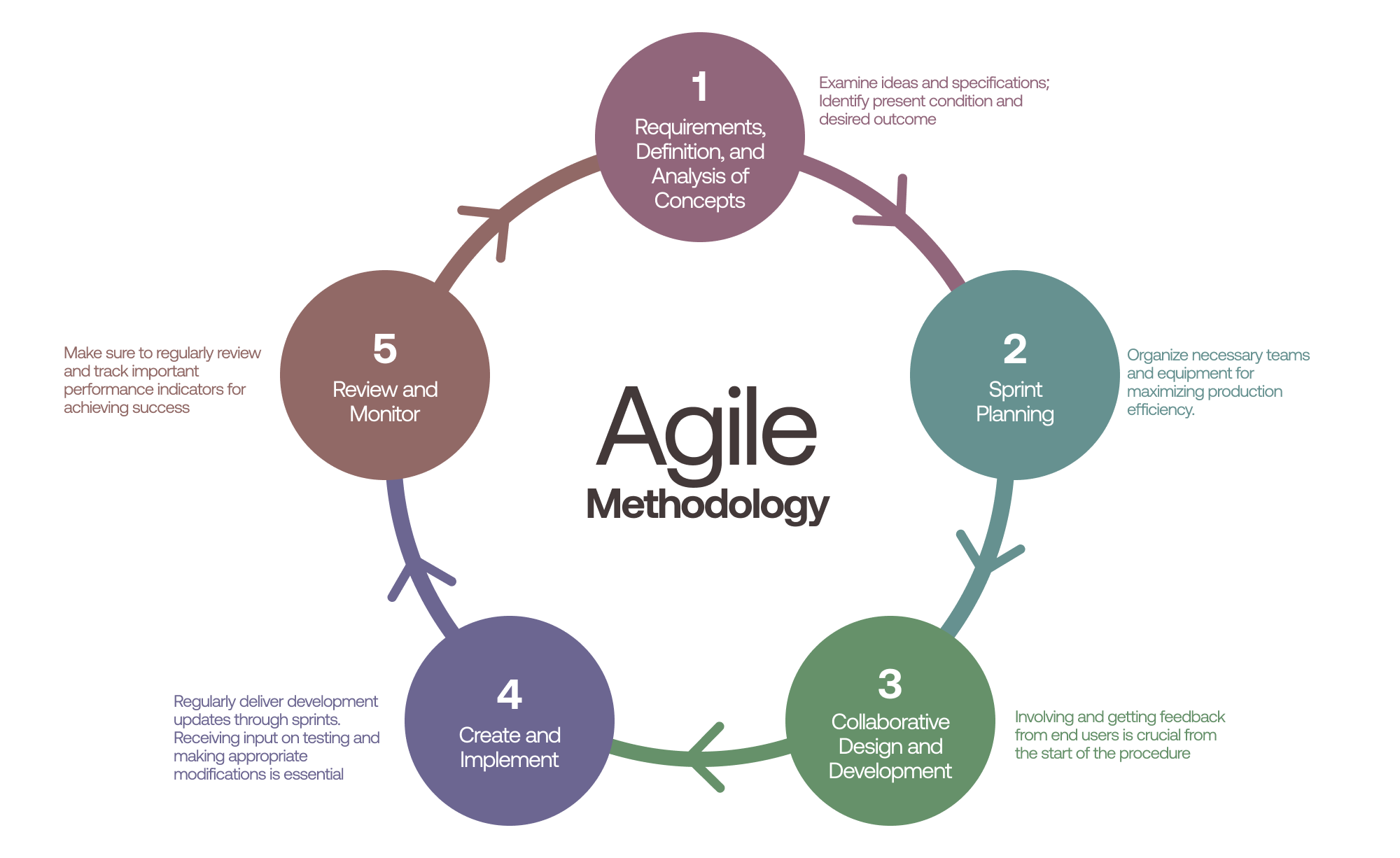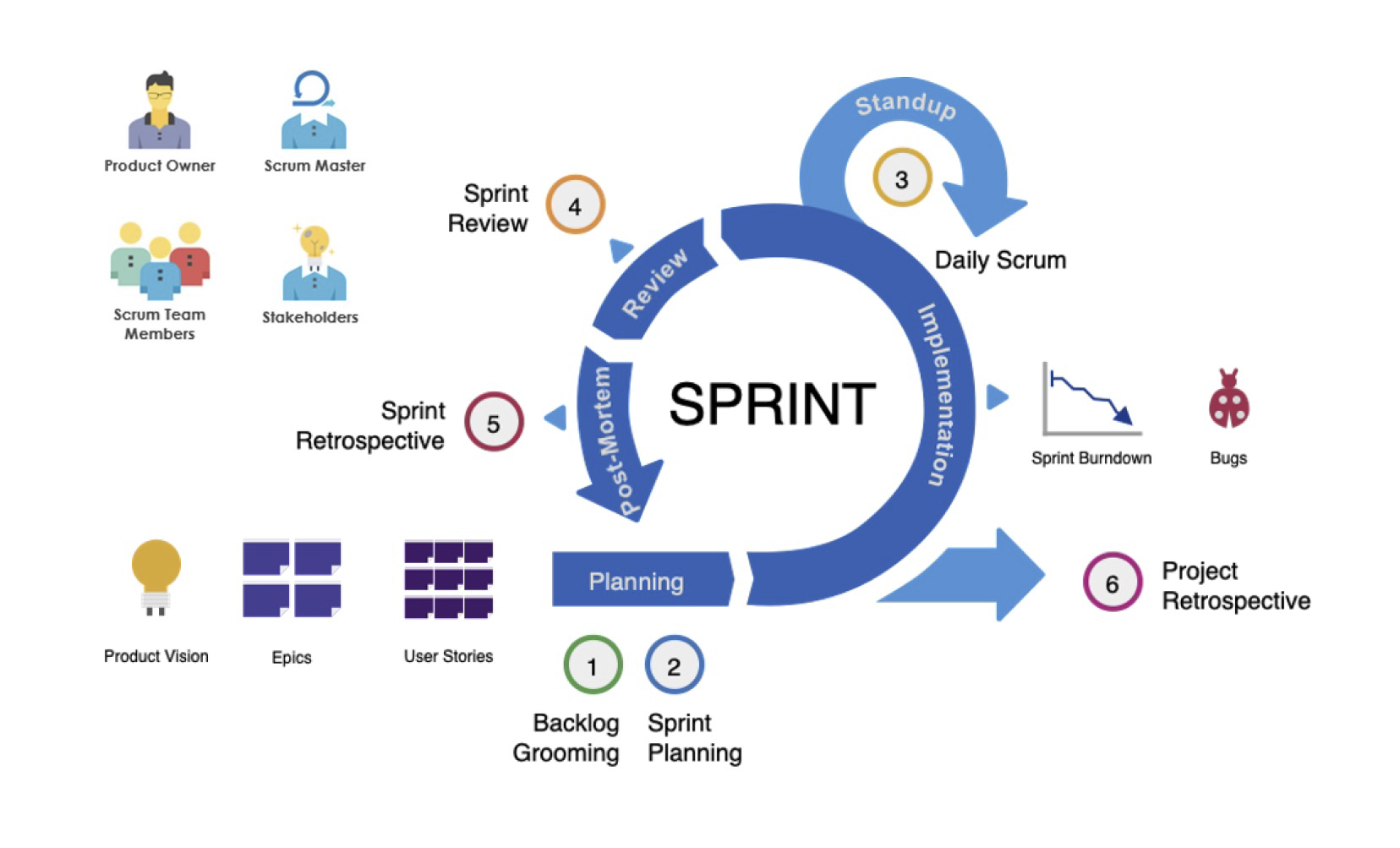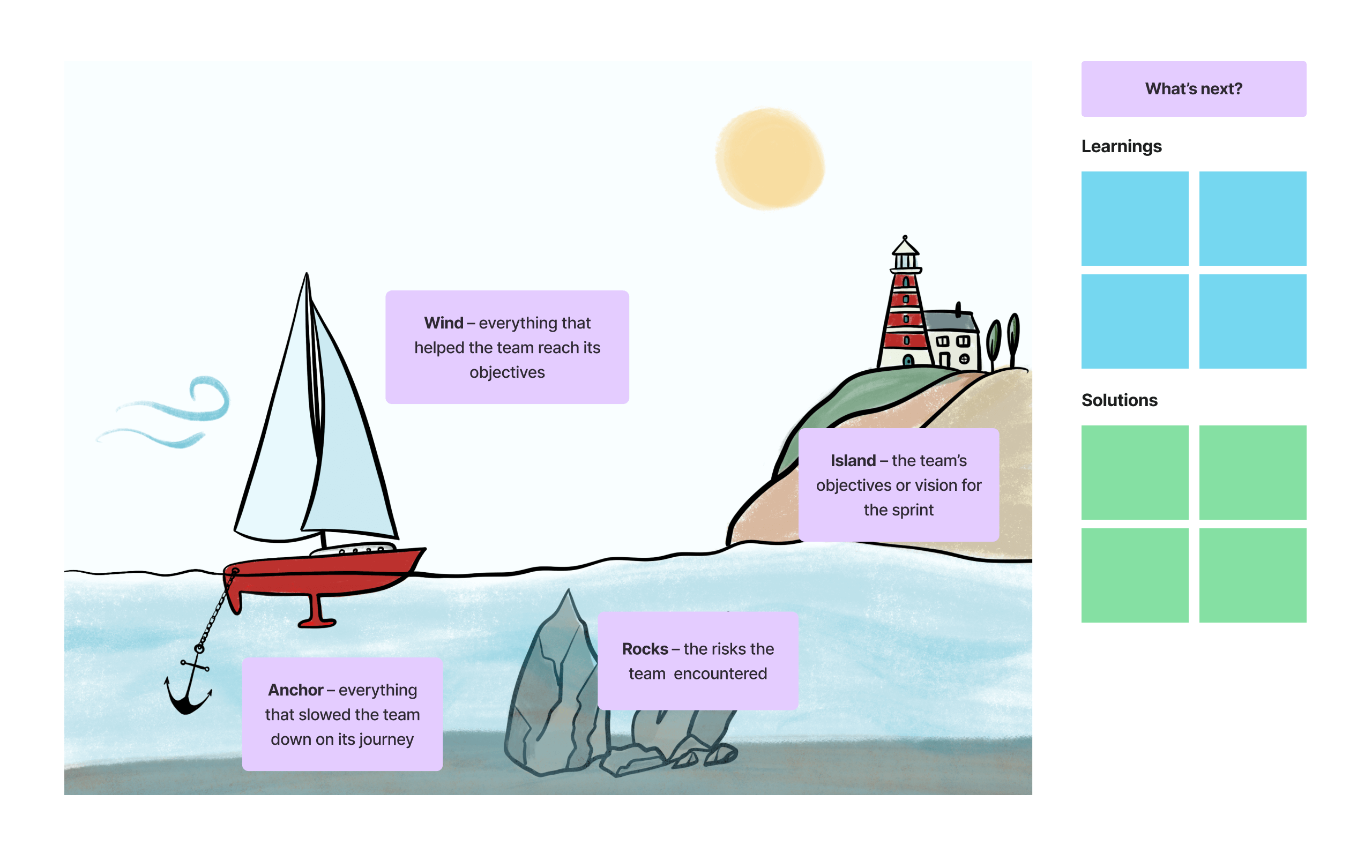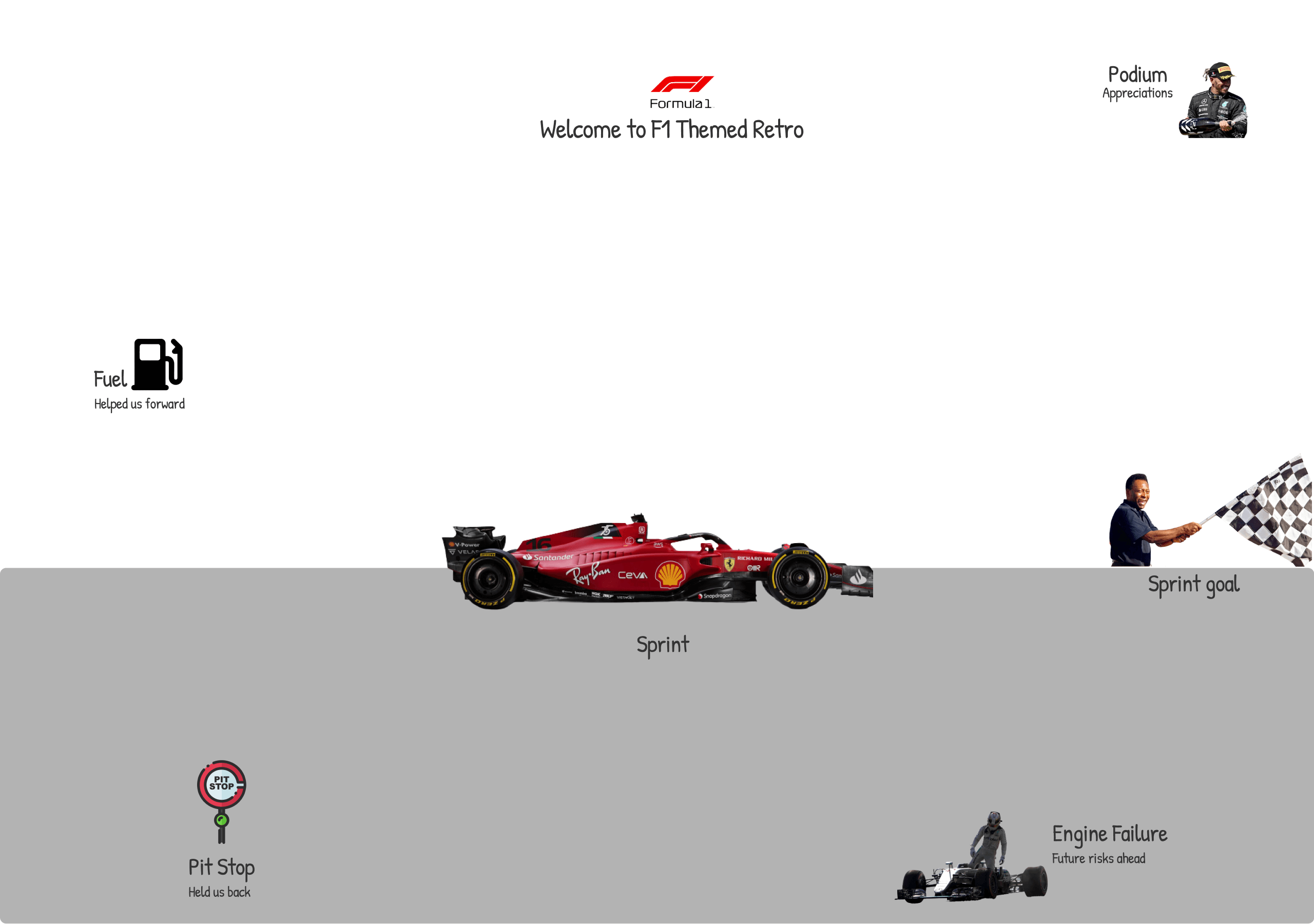The agile software development process has been spoken about and evangelized for a long time. However, Wednesday being a services company, we often work with founders who don't have a technical background. If you fit this bill, this article is for you.
In this article, I write about the agile methodology emphasizing Retrospectives. A retrospective is a meeting that is held to look back and assess progress.
What is the agile methodology?
The agile methodology is a way of building software. Think of this as a process. If followed correctly, the results are far superior for the business and the people building them.
The agile manifesto was published in 2001 by industry veterans. In it mentions the four things that agile values are:
- Individuals and interactions over processes and tools
- Working software over comprehensive documentation
- Customer collaboration over contract negotiation
- Responding to change over following a plan
The agile methodology helps us convert business ideas into digital products. It breaks the software development process into small timeframes called sprints. Each sprint can be anything from 2-4 weeks. However, the goal is to keep it small.
Each sprint has an objective. It starts with setting a goal and gathering all the requirements to achieve it. After the execution team works towards achieving that goal through careful collaboration between design, development, and other teams. There are multiple releases during this process, and communication is open and transparent. At the end of the sprint, there is a demo and a retrospective.
So, in a nutshell, you plan, execute, communicate, release/showcase, and analyze. This process allows you, as a business owner, to have a view of what is being built. You can show the unfinished product to potential customers, gather feedback and use that as a requirement for the next sprint.

Retrospectives in Agile
The retrospective is looking at the history of related events; its Latin source is retrospicere, meaning "to look back at."
The agile methodology has several frameworks, such as Kanban, SCRUM, Extreme Programming, etc. For this article, we'll use SCRUM. Retrospectives in SCRUM as implemented via a (drum roll....) meeting called "Retrospective."
A retrospective meeting should include the following:
- Business Stakeholders
- Product Owners
- The Scrum Master
- Scrum Team members
This is best conducted at the end of a sprint (during the review and monitoring phase). Here is a diagram that shows the scrum framework in action.

In the SCRUM framework, the retrospective can be conducted during the start or end of the sprint.
Enjoying this article? Don't miss out on more exclusive insights and real-life digital product stories at LeadReads. Read by Top C Execs.
Join here.
How does a retrospective help?
Retrospectives are a great way to adapt to the truth. It is a meeting where every team member is present. Both the positives and the negatives of the sprint are talked about. It is a way to identify the positives and build frameworks with the team to amplify them. While also identifying the negatives and working with the team to reduce them.
As a business owner, it gives you a team constantly working to find ways to improve how they work. They're growing and changing to the needs of the business, market, and many more factors.
How do you conduct a retrospective?
To get a good outcome from the retrospective, the SCRUM master / Project Manager must be prepared with the required artifacts, such as data, milestones, and metrics essential to conducting the retrospective.
To conduct a retrospective, you can use different methods, such as using available digital boards such as Miro, Atlassian product InVision DSM, etc., or you can conduct the meeting offline by using a whiteboard.
If you’re conducting this for the first time, explain what a retrospective is. Prepare all the participants, so they understand what is expected out of this meeting. Then using the board, you prefer to create three sections and name them “What went well,” “What held us back,” & “What could be improved.”
What went well
This section is used to look back at the achievements that are made in the current sprint or the development process. Listing out the achievements and congratulating the team on their efforts helps to increase Team rapport and motivates the team to push their limits.
What held us back
Here it is okay to discuss the setbacks that are faced during the development process so that every stakeholder can understand the cause of the slowness/blockers in the development process.
What could be improved
From the setbacks discussed, we need to find an alternative way to overcome the setbacks to improve the development process and achieve the goal. These commitments need to be made in the current development process. These commitments could be "Having frequent brainstorming sessions," "setting standards on code," or anything that helps the team improve the work's velocity and quality.
To conduct a successful retrospective, ask each person in the meeting to enter things into each section. Then address each item that is mentioned and create actionables that the team can work on to improve.
Tips to conduct a good retrospective
Here are some tips that will help you conduct a retrospective well:
- Every voice matters. Give everyone a chance to voice their opinion.
- Share feedback but positively. Build a culture where it’s feedback should be taken as an opportunity to improve.
- Listen with an open mind. Every idea or thought is important.
- Be prepared. Keep all the data you need to go about the sprint, the progress made, etc.
- Ask the right questions that are required to understand the root cause of setbacks.
What does Wednesday do different?

Retro calls are conducted on the last day of each Sprint. To make the process more immersive, our design team came up with cool templates for the retrospective calls. For example, the template above co-relates each Sprint with the ship voyage, and teams can categorize their feedback in appropriate sections. Similarly we created a F1 racing track inspired retro board.

You can create your own and make this process fun. If you’re doing remote retrospectives share these boards on the call, give edit access to everyone and ask them to work on the common board. Here is a link to the F1 board and here is the link to the one above. Feel free to copy and use them on your projects. A sneak-peek into one of ours!
Where to go from here
I hope this article has helped you understand what the agile development process is and more importantly what a retrospective is. In short it’s a way to analyse and monitor what went well and what didn’t. It helps you understand where you maximise your efforts and what not to do.
If you've enjoyed reading this article, please share it with a few friends. If you're looking for a team that always delivers, reach out to us at hello@wednesday.is







